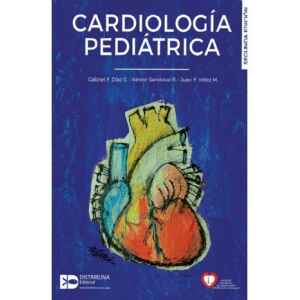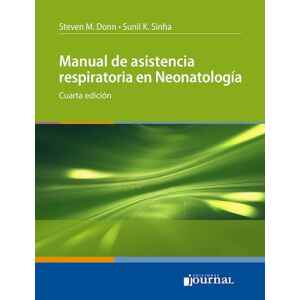Woolridge – Avoiding Common Errors in Pediatric Emergency Medicine 1 Ed. 2020
$396,000.00
¡ LIBRO PARA IMPORTAR ENTREGA DISPONIBLE EN 3O DÍAS !
TABLA DE CONTENIDO
THE CRASHING PATIENT 1
1 Overlooking the Basics and Focusing on Medications That Do Not Matter During Pediatric Codes
2 Placing Provider Comfort Over Family Presence
3 Overlooking Opportunity to Help the Family by Saving Crucial Evidence
4 Epinephrine 1:10 000 vs 1:1000: Are You Prepared to Make Sense of This?
IMAGING
5 Do Not Scan Head Trauma Based on Your “Gut”—Use Evidence-Based Guidelines!
6 Negative Scan—Positive Belly: Do Not Rely Solely on the CT Scan When Evaluating Children With Blunt Force Abdominal Trauma
7 Appreciate Practice Differences in the Approach to Pediatric Nontraumatic Abdominal Pain
8 Neuroimaging of Nontrauma Patients
9 To CT or Not to CT: Develop Good Imaging Strategy
10 Know the Options: Imaging Modalities for Pediatric Neck Masses
11 Advanced Imaging—MRI in Children
12 Pediatric Lung POCUS: An Underutilized Tool for Pediatric Pneumonia
13 Do Not Apply the Adult FAST Criteria to Pediatric Trauma Patients
14 Cardiac POCUS: Be Able to Distinguish Pericardial Effusions From Their Mimics
15 Scan First, Irradiate Second: The Error in Jumping to Computed Tomography
16 Skin and Soft Tissue Infections: Fifty Shades of Grayscale
ENVIRONMENTAL/TOXICOLOGY
17 Errors to Avoid: Overlooking Potential for Lung Injury in Children Who Appear Well
18 Not Aggressively Treating the Hypothermic Drowning Victim
19 Drowning Prevention—Missing the Opportunity to Teach: Prevention When the Near-Miss Events Happen
20 When Small Bites Matter: The Deadly Potential of a Pill
21 Activated Charcoal: Avoiding Worthless Usage of a Valuable Therapy
22 Underestimating the Damage a Simple Laundry Detergent Pod Can Cause
23 Not Having a Plan to Safely and Effectively Cool Critically Ill Patients With Heat Stroke
24 Cold Illness: Be Prepared to Use All the Tricks for Aggressive Rewarming
25 Rabies, It Is More Than Bats: Know Your High-Risk Case
26 Antivenom in Children Is Not Based on the Child’s Weight
EAR NOSE THROAT
27 Otitis Externa: A Dive Into Swimmer’s Ear
28 Acute Otitis Media and Complications
29 Don’t Miss Hearing Loss—A Subtle Sign of Serious Pathology
30 Leaking the Information: Be Prepared to Manage Otorrhea
31 Punching Up the Management of External Ear Trauma
32 Do Not Miss Middle and Inner Ear Trauma: Not All Ear Drainage Is Infectious
33 Intranasal Foreign Bodies: Optimizing Chances of Successful Removal
34 Blow by Blow on Nasal Trauma in Children
35 Epistaxis: The Nose Knows How to Stop the Leak
36 Orbital Fractures: Be Careful to Avoid Getting Trapped
37 Not Using Absorbable Sutures for Children With Facial Lacerations
38 Overlooking the Benefits of Regional Anesthesia in Children
39 Using Color of Rhinorrhea As a Justification for Giving Antibiotics
40 Basing Treatment of Strep Pharyngitis Solely on Centor Criteria
41 Neck Pain and Fever Does Not Always Mean Meningitis. Think of RPA. Retropharyngeal Abscess
42 Oropharyngeal Puncture? Do Not Forget That There Is a Big Blood Vessel to Worry About
43 Not Believing the Parent Who Believes the Child Choked on Something
44 Do Not Treat Detergent Pods Like Any Other Type of Ingestion
45 Not Appreciating “Recurrent Croup” to Be a Clinical Sign of Anatomic Airway Anomalies
46 Not Having a Strategy in Place to Manage the Patient With a Posttonsillectomy Hemorrhage
47 Attempting to Close Every Intraoral Laceration
48 Thinking Ludwig Angina Only Happens in Adults
49 Overlooking Simple Strategies to Manage Pain Related to a Dry Socket
50 Dismissing Sialadenitis as a Simple Infection and Throwing Antibiotics at It
51 Do Not Forget About the Secondary Teeth While Managing a Primary Tooth Injury
52 Focusing on Only the Teeth When There Is Dental Trauma
53 Not Thoroughly Evaluating Facial Fractures
54 Put Down the Scalpel—A Thoughtful Approach to Neck Masses
55 Blunt Neck Trauma
56 Penetrating Neck Trauma
57 Torticollis: Maybe a T wist but Hopefully Never a Shout
58 Atlantoaxial Rotatory Subluxation (AARS): When Children Truly Look Like Little Birds
59 Managing Pediatric Eye Injuries: You Will Shoot Your Eye Out, Kid!
60 Be Prepared to Manage Eye Lacerations
61 Be Prepared to Care for the Other Pediatric Red Eye: Hyphema
62 Pediatric Vision Loss
63 Be Prepared to Manage Eye Burns—Chemical, UV , Thermal
64 Do Not Confuse Orbital Cellulitis With Preseptal Cellulitis
65 “Eye Spy” Abnormal Pupils: Be Aware That an Abnormal Pupillary Exam Is Often a Sign of Underlying Problems
66 Nasolacrimal Duct Disorders: More Than Just Tears
67 Conjunctivitis: A Sight for Sore Eyes
AIRWAY
68 Not Considering an Infant’s Airway as a “Difficult Airway” from the Beginning
69 Not Knowing the Differences Between the Pediatric and Adult Airways Can Lead to Failure to Intubate the Pediatric Airway
70 Get Rid of Your Discomfort With Percutaneous Transtracheal Ventilation
71 Treating All Noisy Breathing as the Same
72 Don’t Rush to Intubate an Infant After PGE1 Administration
73 Thinking Lack of Wheezing Is a Good Finding With Severe Asthma
74 Giving Albuterol to All Kids With Bronchiolitis
75 Treating Patients With Cystic Fibrosis and Pneumonia With Typical Treatments for Community-Acquired Pneumonia
76 Not Recognizing Risk Factors for PE in Children
77 Overlooking the Concurrent Injuries in Children With Rib Fractures
CARDIOLOGY/DYSRHYTHMIA
78 Do Not Miss Undiagnosed Congenital Heart Disease: In Babies With Heart Disease, Color Matters!
79 Poor Feeding, Cough, and Fussiness? Common Complaints Deserve a Comprehensive Workup for Pericarditis in the Postoperative Congenital Heart Disease Patient
80 A Faint Chance of Danger—Do Not Assume Pediatric Syncope Is Just Orthostasis Without Ruling Out These Diagnoses
81 Chest Pain: Do Not Let a Normal Examination Falsely Reassure You
82 T achycardia: Don’t Assume T achycardia Is Just “Stranger Danger”
83 Secondary Signs of Endocarditis: Know Them by Heart
84 Viruses Can Be Real Heart Breakers—Do Not Let the Myocarditis Patient Blend in With All the Respiratory Viral Illnesses
85 Remember That Very Little of Pediatric Hypertension Is Cardiac
86 Getting to the Heart of the Matter: Do Not Miss These Features of Pathologic Murmurs
87 Do Not Crash and Burn by Missing Kawasaki Disease
88 Pediatric Electrocardiogram Differences: Know Which Findings Are Normal in Children and Which Ones Spell Trouble
89 Do Not Be Shocked! Know the Meaning of the First Three Letters of a Pacemaker’s Code
ABDOMEN
90 Be Aware of the Varied Presentation of Pediatric Appendicitis
91 Pyloric Stenosis: Diagnosis the Stenosis Before It Becomes “Classic”
92 The Inception of an Intussusception: Look for the Bowel Within a Bowel Even if Symptoms Are Not “Classic”
93 GI bleed: Do Not Be fooled by bleeding imposters
94 The Hard Truth of Constipation—Do Not Miss the Potentially Serious Causes
95 Pediatric Diarrhea—Hydration Is the Most Important Factor in Treatment
96 Dehydration and Electrolyte Problems: Do Not Start IV Fluids in Children Without a Trial of PO Fluids and Antiemetics
97 Why Is My Baby’s Poop White?: Do Not Forget to Check the Direct Bilirubin Level for Jaundiced Infants
98 Lets Be Blunt—Do Not Underestimate the Importance of Serial Abdominal Examinations in Pediatric Blunt Abdominal Trauma
99 Oh Heavens…. HUS and Escherichia coli 0157:H7—Do Not Rush to Give Antibiotics to Children With Bloody Diarrhea
100 Twist of Fate: Do Not Ignore Bilious Emesis in a Baby
101 Let Your Light Shine!: Do Not Confuse a Hydrocele for a Hernia
102 Time Is Stoma: G-Tube Dislodgement Is a Time-Sensitive Emergency
103 “Not Aggressively Treating Patients With Nephrotic Syndrome Presenting With Fever”
GENITOURINARY AND RENAL
104 Renal: Nephritis: “Not Having a Strategy to Evaluate Hematuria in a Child”
105 Overlooking Spontaneous Bacterial Peritonitis in Patients With Nephrotic Syndrome
106 “Urine” Trouble Now—Evidence to Approach Pediatric UTI
107 Funny Dermatologic Findings
108 Vaginitis in the Prepubertal Girl—A Not So Challenging Discharge Diagnosis
109 GU Torsion (Male and Female)
110 Not Just Adults: Abnormal Uterine Bleeding and Teenage Menstrual Issues
111 Straddle Injuries Management: Be Able to Distinguish Accident From Abuse
112 A Sticky Situation: Know How to Manage Labial Adhesion
113 Always Look Under the Diaper: Congenital Abnormalities of the Genitourinary Tract
114 Always Check Under the Hood: Do Not Confuse Phimosis and Paraphimosis
DERMATOLOGY
115 Neonatal Rashes: Know the Bad From the Not So Bad
116 Be Prepared to Manage the Common Pediatric Rashes
117 Be Prepared to Manage Common Pediatric Infectious Rashes
118 The Fits and Starts of Atopic Dermatitis: Strategies to Adjusting Treatment
119 Be Prepared to Recognize and Manage the “Bad” Rashes
120 Do Not Be Tricked Into Missing a Diagnosis of Henoch-Schönlein Purpura
121 Be Prepared to Accurately Diagnose and Support Your Patients With Erythema Multiforme
ENDOCRINE
122 DKA: Being Overly Concerned About IV Fluids
123 Allowing Hypoglycemia to Surprise You in the Pediatric Patient Presenting With Gastroenteritis
124 Do Not Forget the Stress-Dose Steroid in Hypopituitarism!
125 Not Using Hydrocortisone for Treating Congenital Adrenal Hyperplasia (CAH)
126 Overlooking the Clinical Scenarios That Place a Child at Risk for SIADH
127 Forgetting Thyrotoxicosis in Patients With Vague Complaints
128 Not Considering Rickets as a Cause of New-Onset Seizures in Young Children
NEUROLOGY
129 Not So Simple, or Is It? Prepare to Care for Febrile Seizures in Children
130 Status Epilepticus: The Most Common Neurologic Emergency in Children
131 A Lower Threshold to Seize: Understand First-Time Seizure in Pediatric Patients
132 Pediatric Headache
133 Pediatric Stroke Is Routinely Missed on Initial Presentation: Do Not Be Routine!
134 “Flaming Hot Pediatric Brains”—Anti-NMDA and Other Forms of Encephalitis
135 Pediatric Vertigo: Differentiating Life-Threatening From Benign Etiologies
136 Be Able to Scrutinize the Causes of Pediatric Ataxia
137 Muscular Dystrophy
138 Skull Fractures: When Do We Really Need to Know They Are There?
139 When a River Does Not Run Through It—Prepare to Manage Pediatric Hydrocephalus
140 Be Prepared to Troubleshoot and Manage Shunts
141 Be Prepared to Manage Pediatric Neurologic Technology
ORTHOPEDICS
142 Fingertip Injuries: Keep It SIMPLE, Do Not Forget to Check the Tendons, and Use Glue
143 Supracondylar Fractures
144 It Is Not Just a Sprain: Do Not Miss Cases of Slipped Capital Femoral Epiphysis and Idiopathic Osteonecrosis (Legg-Calve-Perth Disease)
145 Big Problems in Little Bones: Do Not Miss Physeal Fractures
146 Be Prepared for an Easy ED Fix: Subluxed Radial Head—The Nursemaid’s Elbow
147 Ankle Fracture—Triplane and Juvenile Tillaux Fracture
148 Pediatric Cervical Spine Trauma: The Biggest Pain in the Neck Would Be to Miss One
149 SCIWORA: Do You SCIWORA What I SCIWORA?
150 Overuse Syndromes: When a Good Thing Has Gone Too Far
151 What to Know About Lumbago
Infectious Disease
152 Everything At Once—Obtain Cultures Quickly But Do Not Delay Antibiotics for Fever in the First 28 Days
153 Risky Business: Know How to Approach the “What Ifs” in Neonatal Fever Risk Stratification
154 Fever 2 Months Old and Beyond
156 It Is a Small World After All: Know the Differential for Fever, iarrhea, and Rash in the Traveling Child
157 Diagnose Outpatient Pediatric Pneumonia Clinically and Avoid the X-Ray
158 I Thought It Was Just a Cold: Do Not Forget to Consider Sepsis
159 Meningitis—Do Not Delay the Lumbar Puncture in Patients With High Suspicion for Bacterial Meningitis
160 Pertussis Infection in Infants and Children: Do Not Miss the Early Signs
161 Bronchiolitis: Value Aggressive Airway Clearance Over Nebulizers, X-Rays, and Steroids in Bronchiolitis
162 Bad to the Bones—Do Not Let a Child Limp Out of the ED Without Considering Septic Joint
HEMATOLOGY/ONCOLOGY
163 Tumor Lysis Syndrome
164 Do Not Get Caught Unaware: Recognizing NEW-ONSET CANCER
165 Sickle Cell Disease Is Not Just Anemia: Be Prepared for Complications Affecting All Organ Systems
166 Hemolytic Anemia: Think Before You Transfuse
167 Feeling Blue Despite O2?: Consider Methemoglobinemia
168 Pediatric Neutropenia: Worth a Pause, but Not Always Panic
169 Fever and Neutropenia: Be Prepared When That Oncology Patient Arrives
170 Hemophilia—Do Not Undertreat the Bad Bleeds
171 How Much Is Too Much: Spotting Abnormal Bleeding Disorders
GENETICS/METABOLISM
172 Recognition and Management of Inborn Errors of Metabolism—The Needle in the Haystack
173 Have No Fear; an Inborn Error of Metabolism Is Here! Managing Patients With Known Inborn Errors of Metabolism
174 Be Aware of Abnormal Newborn Screens
NEONATOLOGY
175 Umbilical Care: Do Not Confuse the Normal Granulation With the Purulence of Omphalitis
176 I Am So Hungry! Know the Right Questions to Ask About Feeding Difficulty in the Neonate
177 Is It Supposed to Look That Way?: Know What Is Normal Postcircumcision So You Can Reassure Parents
178 Skin and Bones, or Normal Growth: Identifying Failure to Thrive
ALLERGY/IMMUNOLOGY
179 Anaphylaxis: It May Come as a Shock, but It Does Not Have to End in Tragedy
180 Primary Immunodeficiency: Know What to Expect When Cell Lines Go Awry
COMMUNITY/LEGAL
181 Do Not Forget to Look for the Five W’s of Cutaneous Injuries
182 Do Not Miss Abusive Head Trauma!
183 Broken Bones in Broken Homes: When to Get a Skeletal Survey
184 Sentinel Moments, Sentinel Injuries: Know How to Recognize the Signs of Abuse
185 Cannot Miss: Adolescent Sexual Assault
186 It Is Normal to Be Normal: Understand Unique Aspects of the Prepubescent Sexual Assault Examination
187 Treat the Patient, Not the Poison
188 The Minefield of Minor Consent: Be Sure That You Are Following Your State’s Legal Statutes
APPLIED PRACTICE
189 Evidence-Based Medicine: Have the Tools to Test Wisely
190 My Baby Turned Blue: Changing the Terminology From ALTE to BRUE
191 The Technological-Dependent Child
192 Well-Child Care in the Emergency Department Setting: Looking for “Goldilocks Moments” by Doing Just the Right Amount
BEHAVIORAL HEALTH
193 Psych Outbursts, Pediatric Behavioral Management: Exhaust All Nonpharmacologic Measures Before Chemically or Physically Restraining a Child
194 Navigating the Complexity of Autism Spectrum Disorder in the Pediatric ED—Work With Caregivers to Individualize Care
PHARMACY
195 Avoiding Common Errors in Pediatric Emergency Medicine: Sedation Adjuncts—Do Not Underestimate the Power of Distraction and Analgesia for Pediatric Procedures
196 Wait, Are Pediatricians Secretly Mathematicians?: Do Not Forget That All Dosing in Children Is Weight-Based
197 May the Dose Be With You… Focus on Communication to Avoid the 10-fold Dosing Error
198 Just a T aste: Be Aware of Bad T asting Medicines That Kids May Refuse to T ake
Index
Descripción
Conversacional y fácil de leer, Evitar errores comunes en la medicina de emergencia pediátrica analiza 198 errores que se cometen comúnmente en la práctica de la medicina de emergencia pediátrica y brinda consejos prácticos y fáciles de recordar para evitar estas trampas. Este manual único ofrece capítulos breves, accesibles y basados en evidencia adecuados para leer inmediatamente antes del inicio de una rotación, para una referencia rápida durante la llamada o diariamente para una evaluación y revisión personal.
Cubre temas matizados específicos para el cuidado de los niños en el entorno de emergencia, incluidas las estrategias de tratamiento, las competencias del procedimiento, la patofisiología distintiva y los procesos de la enfermedad.
Analiza el paciente que se estrella, el ultrasonido y las imágenes, los problemas comunitarios y legales, la práctica aplicada, la salud del comportamiento y los temas de medicamentos / farmacia.
Resume cada capítulo con prácticos puntos clave que presentan información imprescindible en un formato de viñetas de fácil acceso.
Ayuda a prevenir errores de práctica clínica en el servicio de urgencias debido a la aplicación de un enfoque de manejo de adultos en lugar de un enfoque pediátrico dirigido.
Ideal para médicos de emergencia, residentes y asistentes; enfermeras especializadas en urgencias, AP que ejercen en el servicio de urgencias y pediatras.
Enriquezca su experiencia de lectura de libros electrónicos
Lea directamente en sus dispositivos preferidos, como una computadora, tableta o teléfono inteligente.
Convierta fácilmente a audiolibros, potenciando su contenido con texto a voz en lenguaje natural.
Información adicional
| Autor | Aaron Leetch, Dale Woolridge, Jim Homme, MD, PhD, Sean Fox, Tim Ruttan |
|---|---|
| ISBN | 9781975138332 |
| No. de Páginas | 384 |
| Idioma | Español |
| Tapa | Blanda |
Debes acceder para publicar una valoración.







Valoraciones
No hay valoraciones aún.